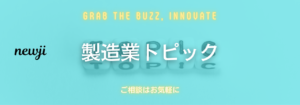- お役立ち記事
- A project to prototype a water bottle spout with a sanitary lid and test the durability of one-touch opening/closing.

A project to prototype a water bottle spout with a sanitary lid and test the durability of one-touch opening/closing.

目次
Introduction to the Project
Creating a water bottle spout with a sanitary lid and a one-touch opening and closing mechanism is an innovative approach to enhance user experience and hygiene.
This project aims to design, prototype, and test this new lid to ensure its durability and functionality.
In a world where convenience and cleanliness are paramount, such a product could revolutionize the way we hydrate on the go.
The Need for a Sanitary Lid
In today’s fast-paced lifestyle, people are constantly on the move, requiring easy access to hydration without compromising on cleanliness.
Traditional water bottle lids have their drawbacks, often requiring both hands to open, or they are susceptible to contamination.
A sanitary lid addresses these concerns by offering a more hygienic option, ensuring that your drink remains untouched by external bacteria and dirt.
Designing the One-Touch System
The central focus of the project is developing a one-touch opening and closing system.
This mechanism allows users to access their beverage with a single hand, which is especially useful during activities such as driving, cycling, or exercising.
The design process involves creating a robust mechanism that is not only easy to use but also remains durable over time.
Components of the One-Touch System
1. **Spring Mechanism**: Essential for the lid’s automatic opening and closure. It should be strong enough to operate smoothly but not too tight, making it difficult for users.
2. **Sealant Technology**: Ensures that the bottle is leak-proof, preventing spills and maintaining the drink’s freshness.
3. **Ergonomic Design**: The button or lever used for opening should be intuitively placed and comfortable for hands of all sizes.
Prototyping the Water Bottle Spout
Prototype development is a crucial phase in this project.
A successful prototype should demonstrate how all components work in cohesion.
Using materials that mimic the final product, such as plastics or metal alloys used in commercial water bottles, helps in understanding the durability and functionality.
Materials and Fabrication
– **Plastics**: Often used for their lightweight nature and cost-effectiveness.
– **Stainless Steel**: Used for durability and a premium feel.
– **Silicone Gaskets**: Important for providing a secure, leak-free seal.
Advancements in 3D printing technology allow for rapid prototype production and testing, drastically reducing the time required to move from design to testing.
Testing Durability and Functionality
Testing ensures that the new water bottle spout meets user expectations and standards.
The tests focus on several key areas:
Durability Tests
– **Drop Tests**: Simulate accidental falls to ensure the lid remains intact and functional.
– **Repeated Use**: Open and close the lid thousands of times to assess wear and tear over time.
Hygiene and Leak-Proof Tests
– **Sanitation Checks**: Verify that the lid design minimizes exposure to germs and dirt.
– **Leak Tests**: Ensure that the bottle remains sealed during vigorous activities like shaking or dropping.
Feedback and Iteration
Once the prototype passes initial tests, gathering user feedback becomes essential.
Real-world usage often highlights unforeseen flaws or areas for improvement that may not be apparent in a controlled testing environment.
Feedback will guide further adjustments, whether it’s tweaking the design for comfort or enhancing its aesthetics.
Conclusion and Future Implications
The project to develop a water bottle spout with a sanitary lid and a one-touch opening and closing mechanism promises to take hydration solutions to a new level of convenience and cleanliness.
Successful implementation not only appeals to health-conscious and active individuals but also aligns with broader environmental goals by encouraging reusable bottle use.
Future innovations could expand on this design, integrating smart technology to monitor hydration levels or using sustainable materials.
Through iterative design, prototyping, and rigorous testing, this project aims to set a new standard for water bottle spouts.
 資料ダウンロード
資料ダウンロード
QCD管理受発注クラウド「newji」は、受発注部門で必要なQCD管理全てを備えた、現場特化型兼クラウド型の今世紀最高の受発注管理システムとなります。
 NEWJI DX
NEWJI DX
製造業に特化したデジタルトランスフォーメーション(DX)の実現を目指す請負開発型のコンサルティングサービスです。AI、iPaaS、および先端の技術を駆使して、製造プロセスの効率化、業務効率化、チームワーク強化、コスト削減、品質向上を実現します。このサービスは、製造業の課題を深く理解し、それに対する最適なデジタルソリューションを提供することで、企業が持続的な成長とイノベーションを達成できるようサポートします。
 製造業ニュース解説
製造業ニュース解説
製造業、主に購買・調達部門にお勤めの方々に向けた情報を配信しております。
新任の方やベテランの方、管理職を対象とした幅広いコンテンツをご用意しております。
 お問い合わせ
お問い合わせ
コストダウンが利益に直結する術だと理解していても、なかなか前に進めることができない状況。そんな時は、newjiのコストダウン自動化機能で大きく利益貢献しよう!
(β版非公開)



